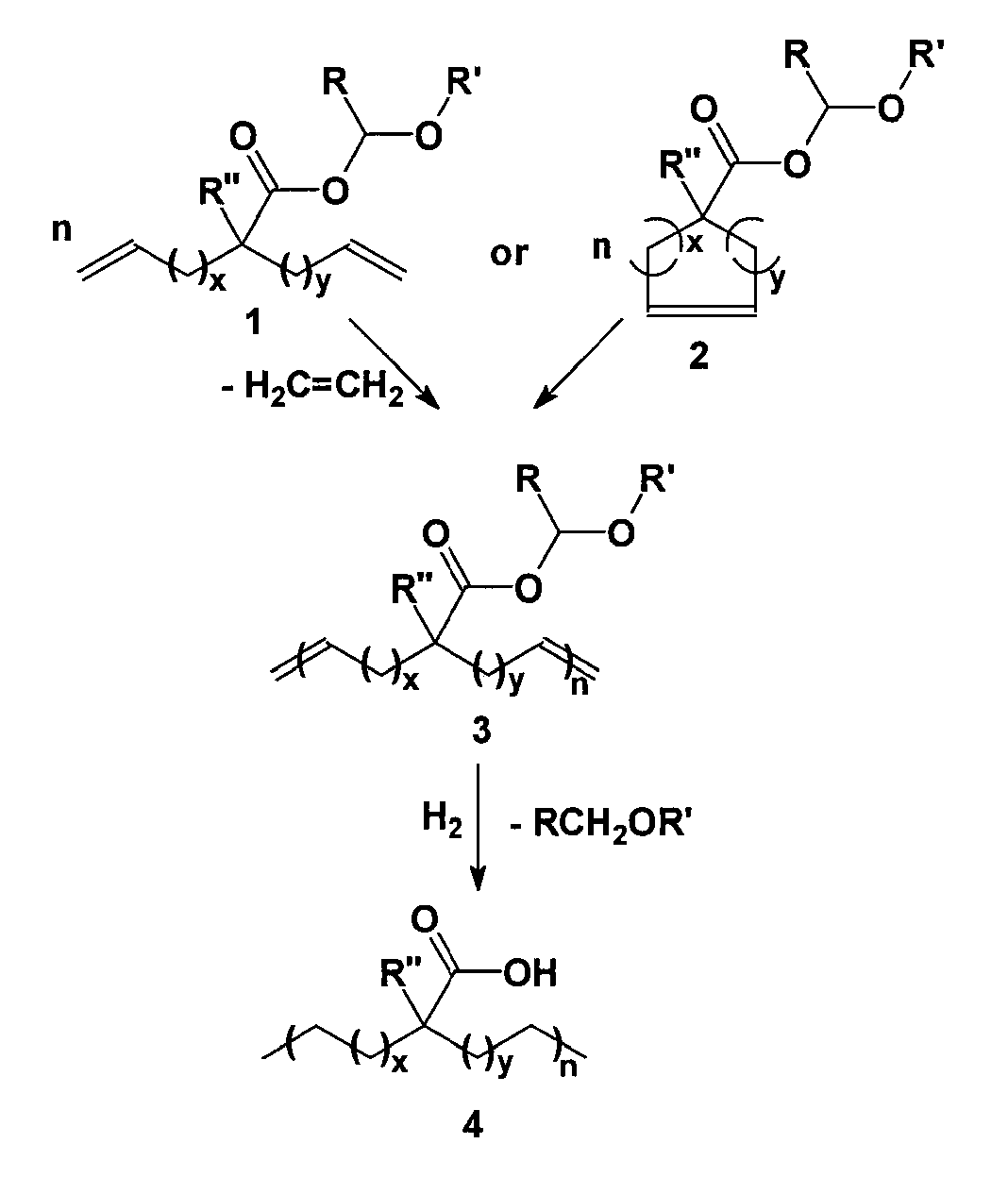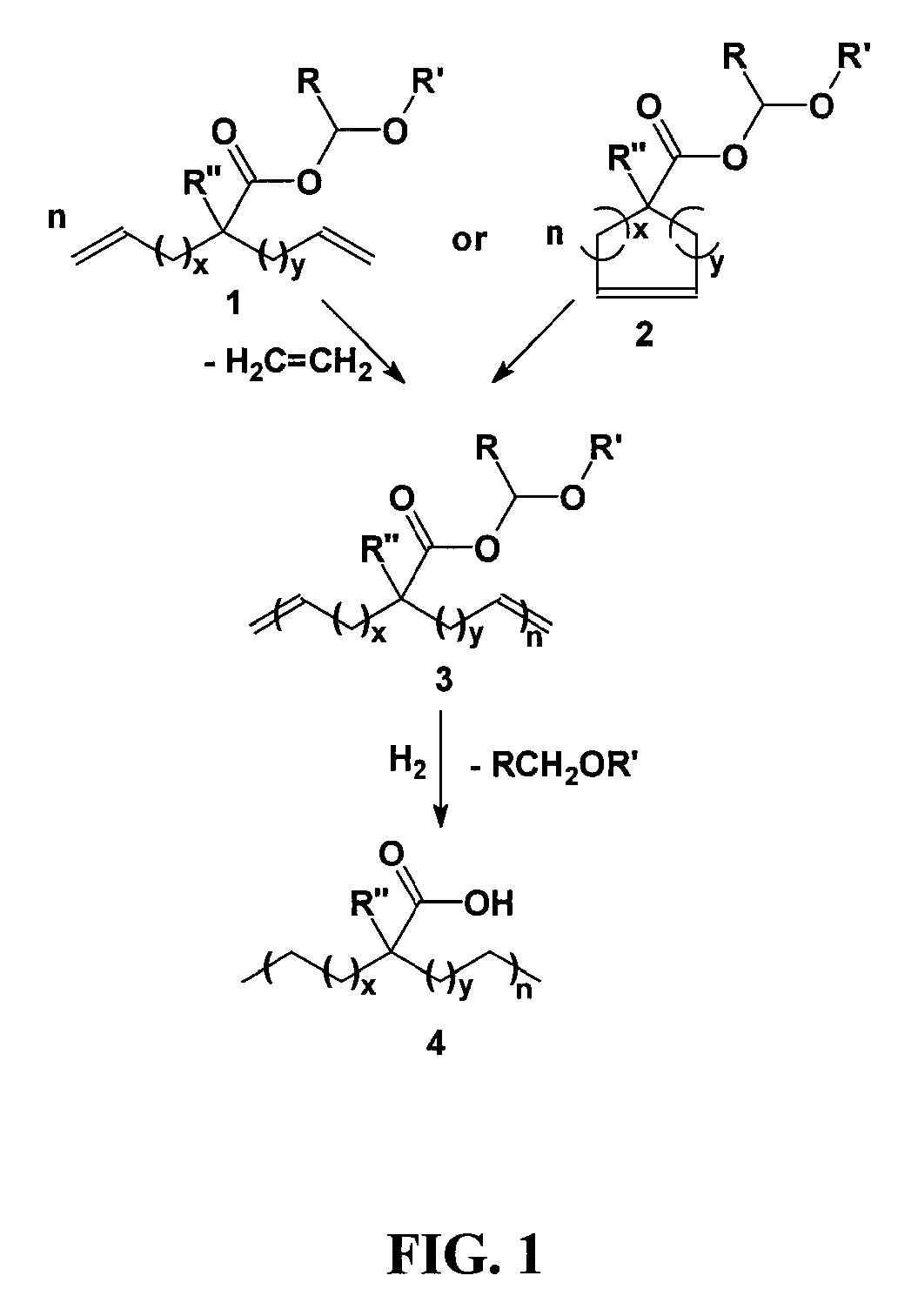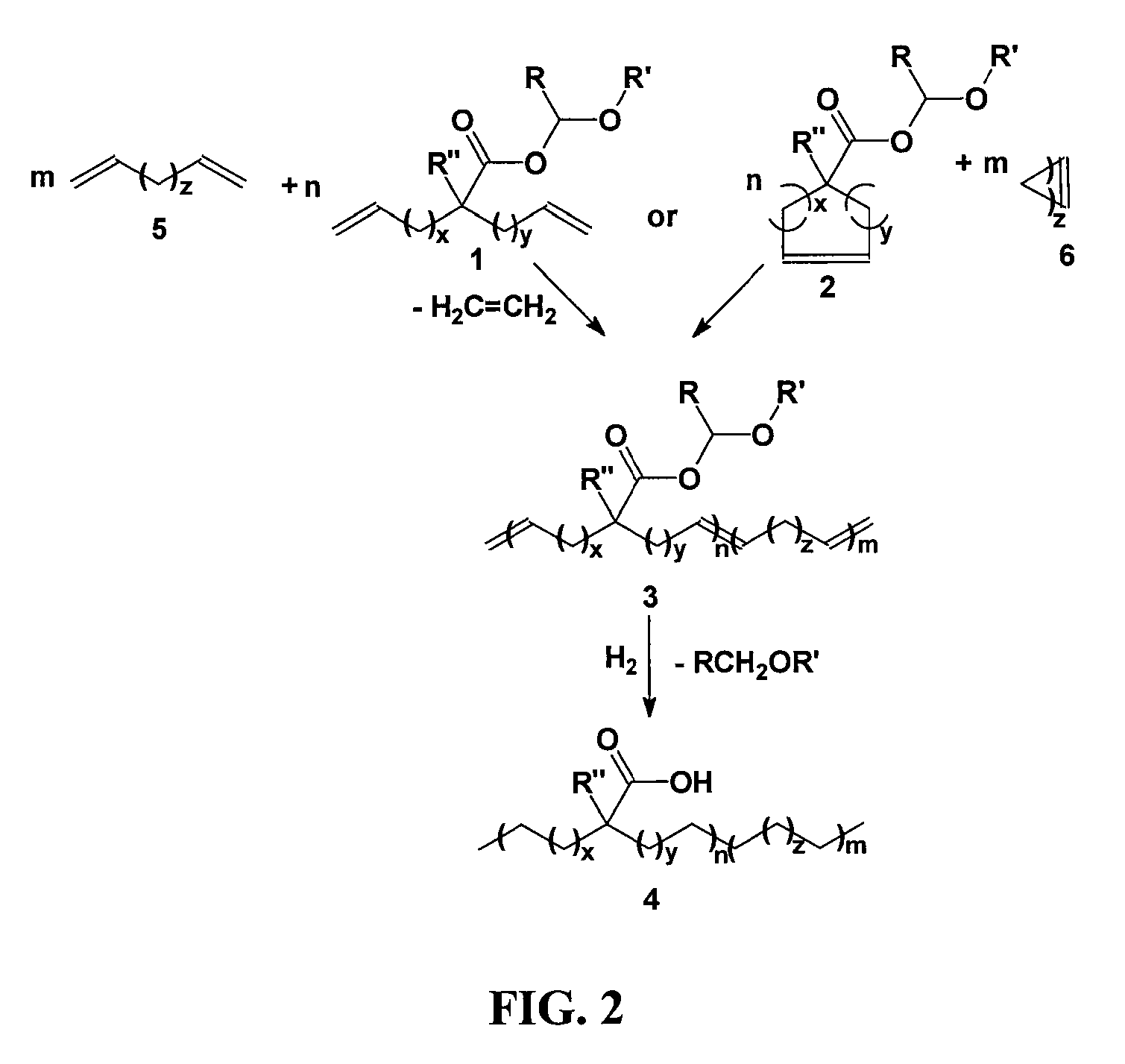Highly organized polyolefin structures
a polyolefin and structure technology, applied in the field of polyethylene copolymers, can solve the problems of inability high cost, and inability to use these higher catalyst levels, and achieve the effect of not proceeding to a large extent the hydrolysis of an ester in the resulting polymer, and being difficult to prepare cyclic monomers
- Summary
- Abstract
- Description
- Claims
- Application Information
AI Technical Summary
Benefits of technology
Problems solved by technology
Method used
Image
Examples
example 1
[0035]A solution of 2-(4-pentenyl)-6-hepteneoic acid (1 eq.) in diethyl ether (20 mL) was slowly added via a Pasteur pipette to a precooled (0° C.) solution of ethyl vinyl ether (excess, usually >4 eq.) and phosphoric acid (cat., 1 drop from capillary pipette) in diethyl ether (10 mL). The solution was stirred cold for 30 minutes under argon, and then warmed to room temperature for 3 days. Basic alumina (˜1 g) was added to the reaction mixture and stirred for five minutes. After filtration and solvent removal, 1-ethoxyethyl-2-(pent-4-enyl)hept-6-enoate was isolated as 7.3 g (99.0% yield) of colorless oil with no further purification required. 1H NMR (CDCl3): δ (ppm) 1.22 (t, 3H) 1.30-1.55 (br, 9H), 1.62 (m, 2H), 2.05 (q, 4H), 2.36 (m, 1H), 3.53 (d, 1H), 3.71 (m, 1H), 4.97 (m, 4H), 5.82 (m, 2H), 5.94 (q, 1H); 13C NMR (CDCl3): δ (ppm) 15.24, 21.14, 26.86, 26.89, 31.91, 32.10, 33.76, 45.98, 64.77, 96.33, 114.92, 138.56, 176.17. In like manner 1,2-(7-octenyl)-9-deceneoic acid was conver...
example 2
[0036]In like manner to Example 1, 2-(4-cyclooctenyl)acetic acid was converted into 1-ethoxyethyl-2-(cyclo-4-octenyl)acetate. 1H NMR (CDCl3): δ (ppm) 1.19 (t, 3H), 1.40 (d, 3H), 1.51-1.79 (br, 3H), 1.98-2.25 (br, 4H), 2.38 (m, 1H), 2.47 (m, 1H), 3.52 (m, 1H), 3.69 (m, 1H), 5.66 (m, 2H), 5.92 (q, 1H); 13C NMR (CDCl3): δ (ppm) 15.26, 21.02, 24.32, 26.08, 26.11, 28.02, 29.51, 29.63, 31.77, 31.91, 43.86, 64.72, 64.78, 96.18, 129.71, 129.75, 130.74, 130.81, 177.55, 177.57.
example 3
[0037]2-(4-pentenyl)-6-hepteneoic acid (1 g) was added to a 50 mL round bottomed flask equipped with a magnetic stir bar and degassed by stirring under high vacuum for one hour. Grubbs first generation catalyst (400:1 monomer:catalyst) was added to the flask, and high vacuum (10−4 torr) was applied slowly over one hour then, the temperature was raised to 50° C. for 72 hours. Upon cooling the room temperature, ethyl vinyl ether (˜10 drops) in toluene (50 mL) was added to the polymerization flask and stirred until all solids dissolved. Precipitation of the crude solution into slightly acidic (1M HCl) MeOH (500 mL) and subsequent filtration followed by vacuum drying afforded 987 mg of unsaturated polymer as brown tacky solid. 1H NMR (300 MHz, CDCl3): δ 5.8 (m, 1H) 5.38 (m, 40.03H); 5.05 (m, 1.99H) 2.40 (m, 41.2H), 2.06 (m, 81.43H), 1.7-1.2 (m, 170.54H); IR (ν, cm−1): 2920, 2850, 1702, 1649, 966.
PUM
| Property | Measurement | Unit |
|---|---|---|
| temperature | aaaaa | aaaaa |
| Tg | aaaaa | aaaaa |
| temperature | aaaaa | aaaaa |
Abstract
Description
Claims
Application Information
 Login to View More
Login to View More - R&D
- Intellectual Property
- Life Sciences
- Materials
- Tech Scout
- Unparalleled Data Quality
- Higher Quality Content
- 60% Fewer Hallucinations
Browse by: Latest US Patents, China's latest patents, Technical Efficacy Thesaurus, Application Domain, Technology Topic, Popular Technical Reports.
© 2025 PatSnap. All rights reserved.Legal|Privacy policy|Modern Slavery Act Transparency Statement|Sitemap|About US| Contact US: help@patsnap.com



